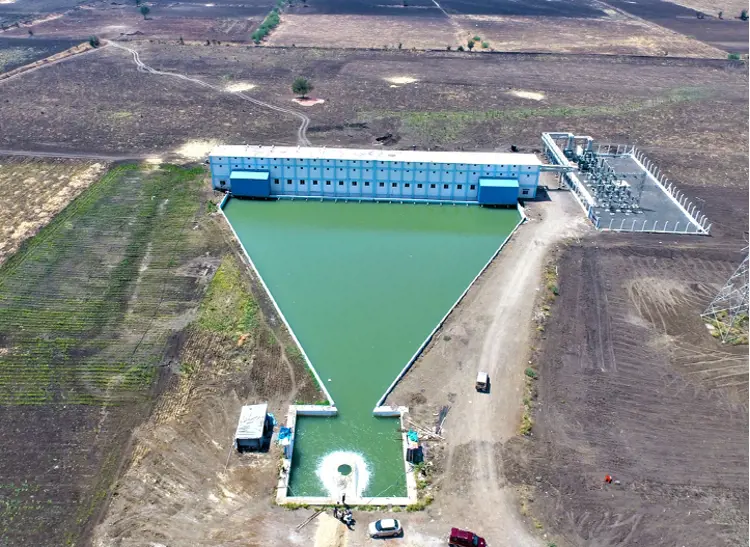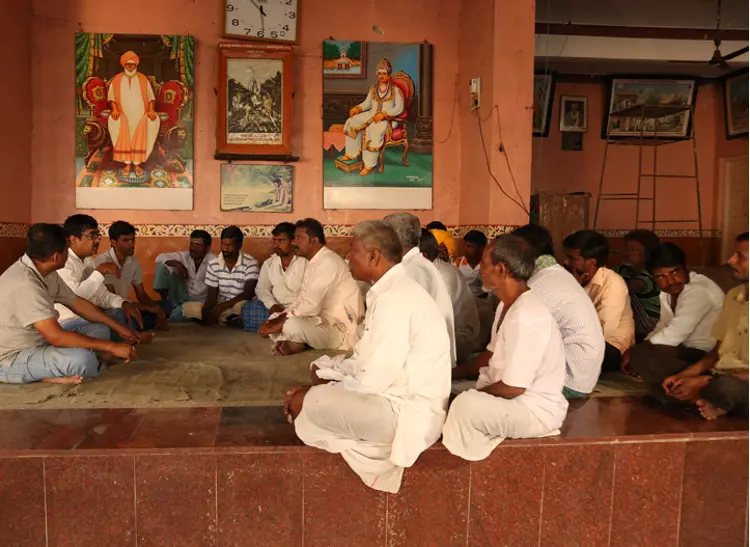Innovation & collaboration drive change in India’s farming communities
Six years ago, smallholder farming in the state of Karnataka was hardly a viable operation. Rainfall played a significant role in whether they succeeded in growing anything or nothing, whether they made a living or struggled. With no access to irrigation, farmers were confined to growing only one crop cycle, and couldn't risk diversifying to increase their profits. Add to this their limited access to capital, technology and markets and it's no wonder the livelihood of these farming families was so vulnerable. Over 56% of the Karnataka State population depends on agriculture for their livelihood. This figure is even higher at the national level. 60% of India’s population lives off farming and 83% of all farmers are smallholders, farmers who cultivate less than 2 hectares of land. These smallholder farmers are the backbone of agricultural growth; they contribute over 40% of India's grain production, and over half of its fruits, vegetables, oilseed, and other crops.
Government on a mission towards a food secure future
The central government of India had realized for quite some time, that India’s future food security is dependent on the stability and the sustainability of its smallholder farmers. India’s population, 1.2 billion now, is estimated to grow to 1.6 billion in 30 years, and the demand for food is expected to grow from 270 metric tons to 450 metric tons. More food has to be grown in order to feed the growing population but resources are limited. Land allocated to agriculture cannot increase and with 90% of freshwater already used by the agriculture sector, the availability and amount of freshwater are also maxed out. How do you cope with a growing population and their demand for food with limited resources to grow that food?
The government understood that improving water use efficiency and reducing the cost of irrigation in the agricultural sector is critical for the country's future food security. In 2014, it introduced two concepts: “Water to all Fields,” and “Per Drop More Crop.” With only 58% of Indian agricultural land being irrigated, the ambitious plan was to invest in the infrastructure to deliver water to every farmer.
Irrigation in India was usually done through traditional methods of canal networks and flooding. Using these methods, about 60% of the water is lost due to conveyance, evaporation, percolation, and seepage. The government understood that improving irrigation infrastructure is critical but upgrading the canals and building new canal structures was an expensive, complicated, and time-consuming process that in some cases, takes more than 10 years to complete.
That’s where we came into the picture.
An innovative model to create a sustainable farming community
When the State of Karnataka decided to irrigate the 12000 Ha area in Hungund Taluk of the Bagalkot District with conventional canal irrigation, we approached them with the idea of them investing in community drip irrigation rather than the traditional canal infrastructure.
Community Irrigation is an innovative model that provides advanced drip irrigation technology to a large community of smallholder farmers. It is made possible by using economies-of-scale to develop the needed infrastructure at a large scale, and enables farmers to grow better crops, become less vulnerable to climate change and thus guarantees the stability and economic growth of each farmer and the entire region.
The Community Irrigation model offers key benefits to farmers:
Water saving: Water use efficiency of 81-85% compared to 30-45 % when using flood.
Fertilizer efficiency: 40% less consumption of fertilizers.
Farm productivity: More efficient water and fertilizer usage results in higher yields and increased farm output.
Farming diversity: Access to water year-round enables farmers to add another crop cycle each year and diversify their crops.
Social equality: Drip irrigation ensures equitable distribution of water to all farmers regardless of their proximity to the water source.
The government also benefits from this communal model. When deploying a community drip irrigation project there's minimal need for land acquisition as most drip lines are underground. The cost of maintenance is significantly lower and the entire project can be completed in under two years, as opposed to canal-building projects which can last over 10 years.
The numbers were on our side and the government of Karnataka listened. Government officials understood that the implementation of drip irrigation would result in more economical use of water and improve the economic status and livelihood of farmers in the region. In 2014, we won the tender and the largest community irrigation project in Asia was underway.

A 360° project; Infrastructure, Irrigation & Education from the government to the smallholders
Executing such a large and complex project involved a variety of energy, infrastructure, and organizational challenges, and required the synchronization of activities of multiple governmental agencies, local water associations, and third-party contractors. We partnered with MEIL (Megha Engineering and Infrastructure Limited), one of the largest infrastructure companies in India. They provided the pipes, the pumps, the heavy equipment for getting the water from the dams to the project area. We took care of implementing the dripline structure and delivering water to each and every farmer.
We quickly learned that one major challenge that we would have to face was educating the local farmer about using the system. In a regular irrigation project, the farm owner is the customer and the user. In the case of community irrigation projects, the customer is the government but the users are the farmers. Many of the users weren't ready at first to accept the gift of drip irrigation. Some feared they were actually getting less water than they would with flooding. Others were suspicious of the technology element and the scientific approach to irrigation. There were political agendas, social issues, and socio-economic barriers. Handling these issues required a great deal of creative thinking and we embraced the challenge. Establishing collaboration with the local farmers was a fascinating process and we have learned a great deal from it.

